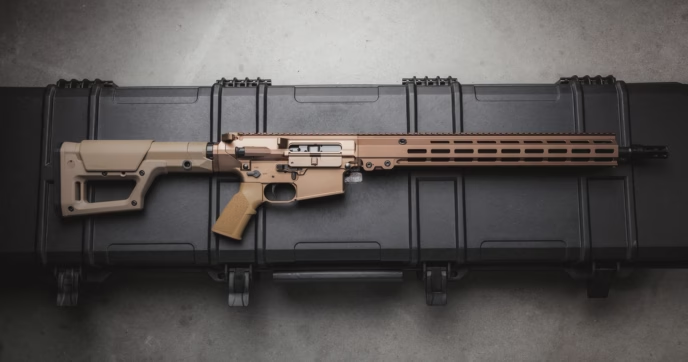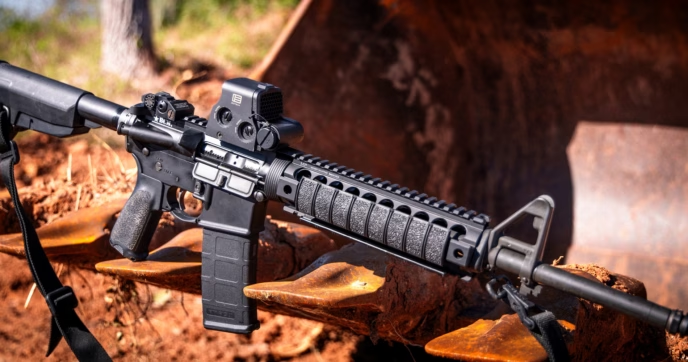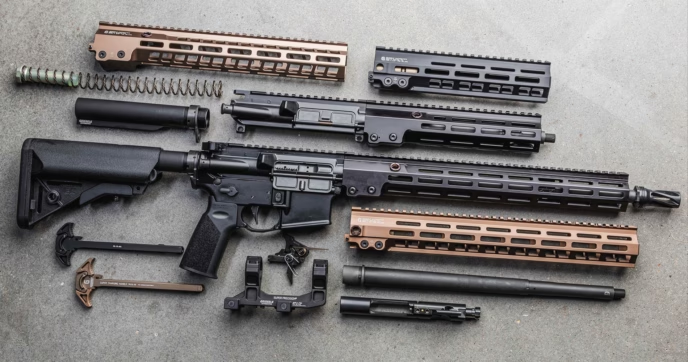.300 Blackout was born to be suppressed. That’s not an exaggeration—superior suppressed capability was literally one of the objectives behind the cartridge’s development, alongside short-barrel performance and parts commonality with 5.56x45mm NATO.
Suppressed use was a key purpose for the round, and it fills that role beautifully. As such, it’s no surprise that a huge percentage of .300 Blackout AR-15 owners are looking for a silencer to match. Suppressing an AR-15 can be a tricky business, though, particularly if it wasn’t designed with suppressed use in mind and isn’t easily tunable.
A pleasant range trip with your .300 Blackout AR starts with choosing the right silencer to take advantage of its strengths and ameliorate its weaknesses.
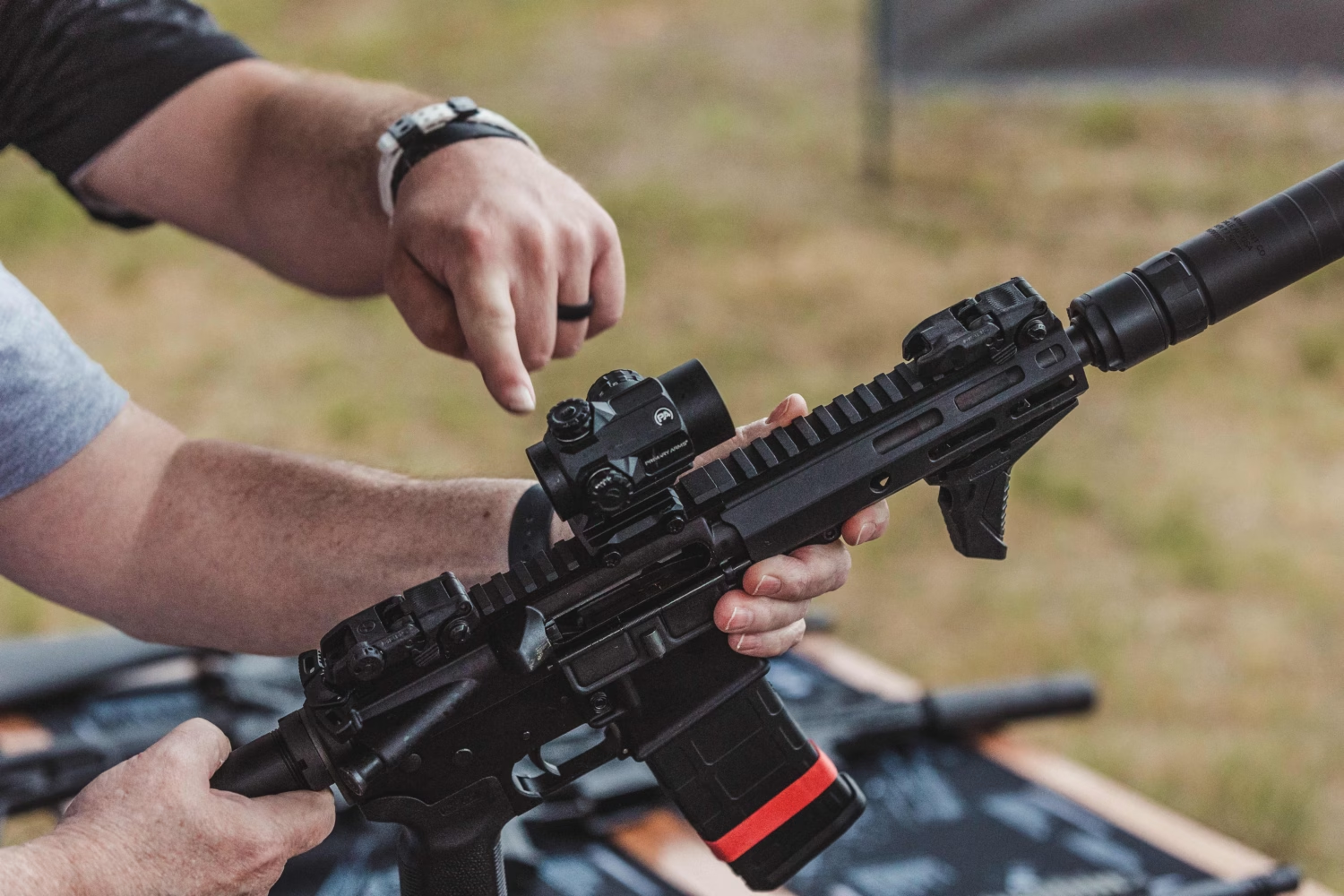
Suppressing a .300 Blackout AR-15: Challenges
Quieting your .300 Blackout upper is simultaneously an easy and challenging process. .300 Blackout itself suppresses quite easily; subsonic ammo is readily available, the market is awash with .30-caliber suppressors, and its ballistics in both sub- and supersonic loadings are excellent.
It’s the “AR-15” half of the equation that can be challenging. When AR-15s were first developed, suppressors weren’t nearly as commonly used as they are today. As such, the rifle wasn’t designed with them in mind the way more modern firearms sometimes are. Its gas system was carefully designed and balanced to function exactly as it is, without any confounding devices attached to the muzzle, so adding a suppressor tends to overpressure the system, resulting in excessive recoil and parts wear, unreliability, and often, a rather unpleasant cloud of gas burst forth from the ejection port and receiver gap and into the user’s face.
AR-15s can be tuned, but unless yours is equipped with an adjustable gas block (unlikely, unless you built your rifle yourself) there’s no good way to limit the amount of gas fed back into the action from the gunshot. Instead, we can control the dwell time—that is, the amount of time between the shot being fired and the bolt unlocking and cycling—by changing out downstream components like the buffer weight and recoil spring.
In some cases, this method of tuning can be very effective. In others, it can leave much to be desired. While tuning via the buffer weight and spring is usually sufficient to achieve reliable function with a suppressor, it’s not always enough to render the experience pleasant. Even if your gun is running like a Swiss watch, if it’s dumping an eye-stinging amount of gas into your face with every shot, it’s going to affect your training.
Another issue is that tuning an AR-15 via the recoil spring and buffer weight can be a tedious process if you frequently switch back and forth between suppressed and unsuppressed use. For instance, if you utilize a suppressor with subsonic loads but remove it for supersonic ammunition, or practice with your suppressor in place for greater comfort but remove it during competitions where the shorter overall length of your firearm is advantageous for moving around obstacles and barriers.
In this instance, switching from suppressed to unsuppressed operation requires cracking open the gun and swapping out carbon-caked components. You’ll also have to carry a spare buffed and spring to switch out.
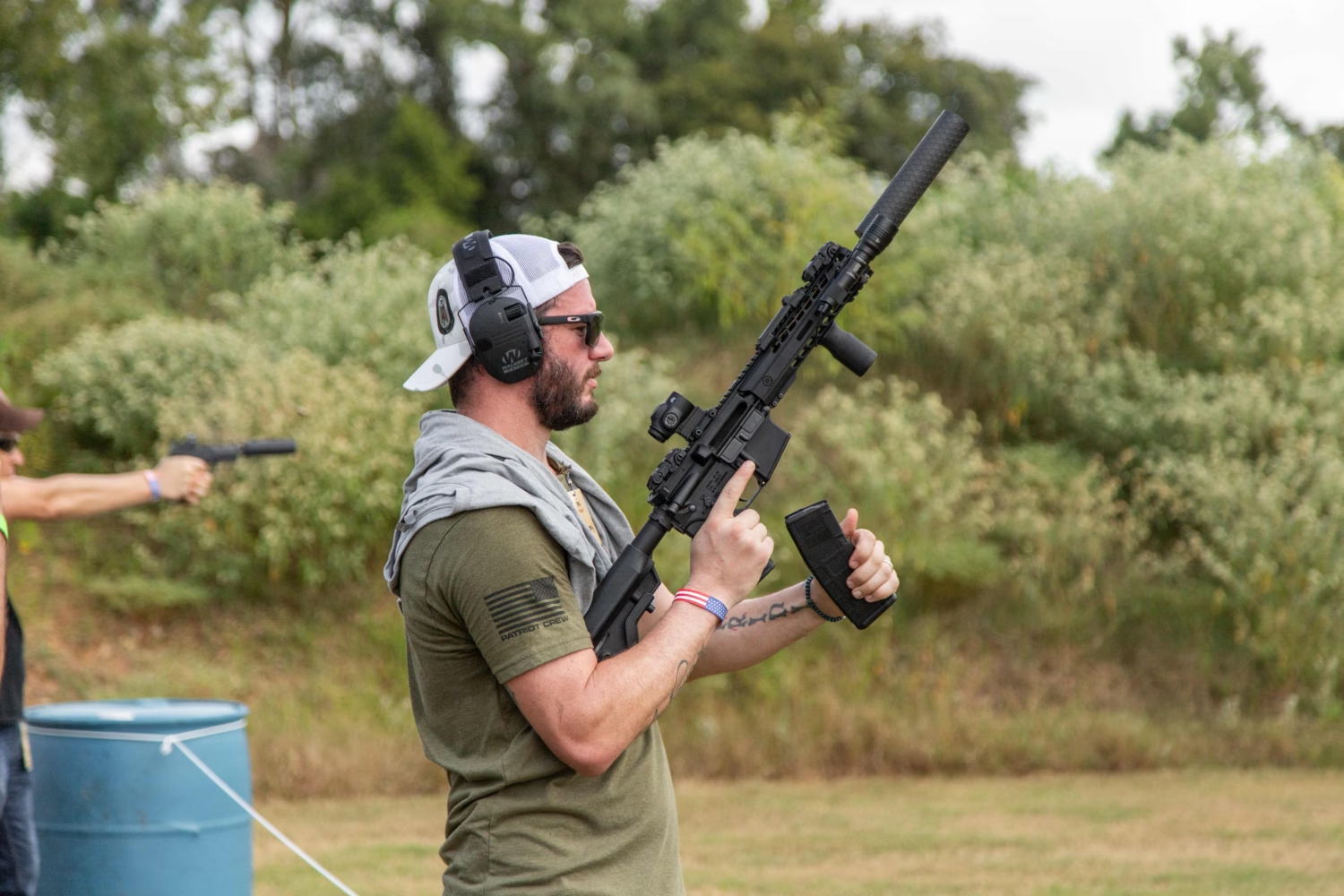
Best Suppressor for a .300 Blackout AR-15
With so many challenges to effectively suppressing a .300 Blackout AR-15, selecting the right suppressor from the start is that much more important. An optimal suppressor can minimize the need for tuning, making it substantially easier to find that happy medium where your gun will run with or without your suppressor and without requiring a gas mask to use.
This starts, of course, with choosing a suppressor of the proper caliber. While multi-cal or overbore suppressors are popular all-purpose options for those looking to suppress a range of firearms with a single silencer, a dedicated .30-caliber can will offer the best performance.
Choosing a silencer that is precisely matched to the caliber of your cartridge will maximize suppression, offering the quietest possible performance. However, it also tends to maximize the amount of backpressure that is generated, which, as we discussed above, is a particular challenge for AR-15s.
To offset this and compensate for the lack of tuning capability in the average AR, the best choice will be a low-back-pressure suppressor. This type of silencer allows the gas from the gunshot to pass through the suppressor and egress through the front after slowing and cooling, rather than become trapped in the suppressor and eject where it is able, as is the case with traditional designs.
Low-back-pressure suppressors are not without their drawbacks. They tend to be a bit louder than traditional suppressors and are often somewhat heavier. However, in the case of a .300 Blackout AR-15, the benefits are well worth the costs. The extra weight is typically not enough to make a major difference in handling or ergonomics, and titanium models are available to offset it.
The increased noise is sometimes noticeable, depending on other factors, but suppressed subsonic .300 Blackout is sufficiently quiet that a modest increase in decibel level is usually a modest price to pay to be free of excess gas and overpressure symptoms.
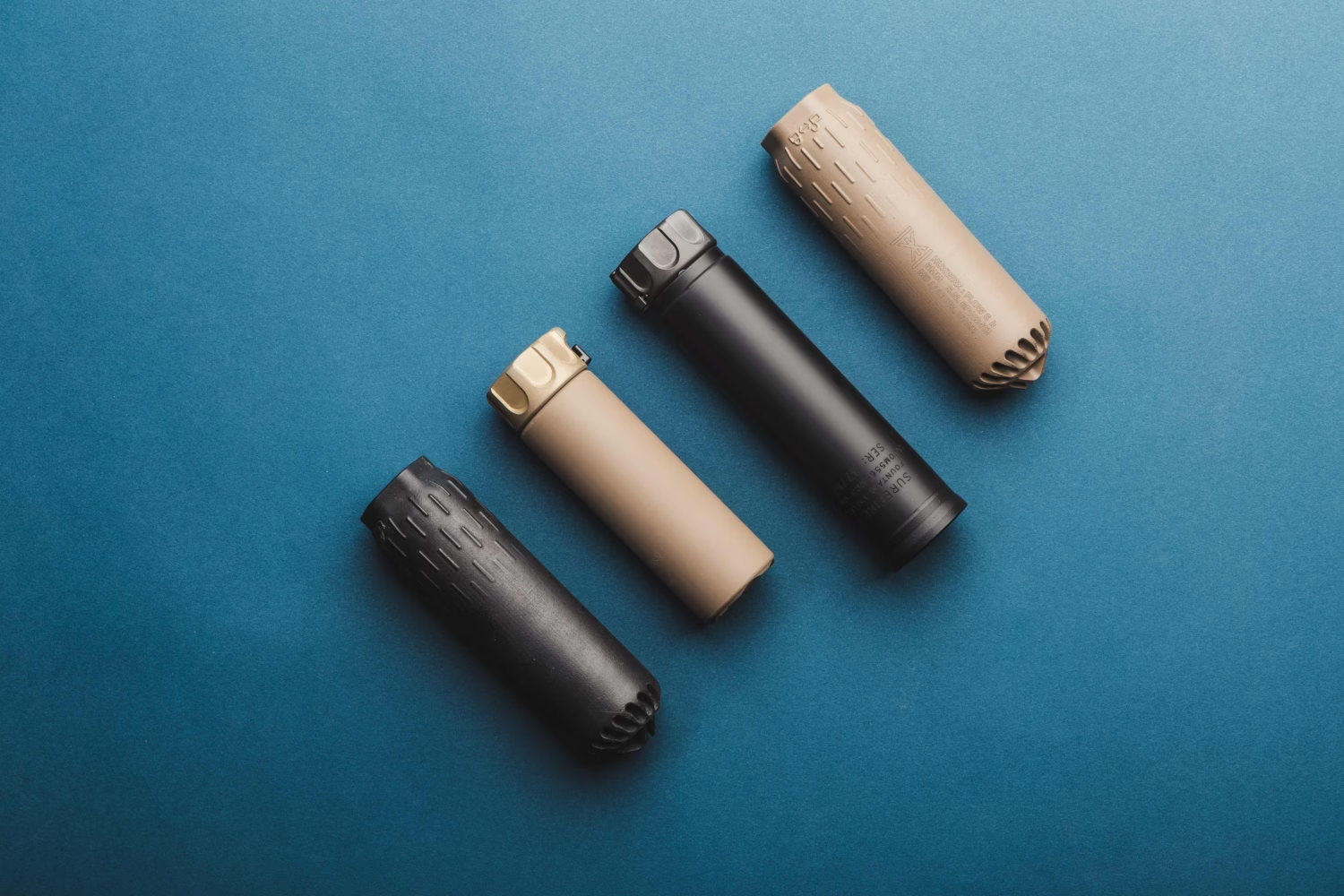
Popular Models
Reduced back pressure suppressors are a relatively recent innovation compared to traditional designs, so there aren’t as many options on the market, but there are still a decent number of manufacturers and models to choose from. Below, we’ll take a look at a few of the most popular.
Huxwrx 762Ti
One of the preeminent names in low-back-pressure suppressors, Huxwrx has a long track record of innovative designs and high-performing cans. Their current flagship .30-caliber model, the Flow 762Ti, is one of the lowest back-pressure cans on the market, making it easy to tune your .300 Blackout to run suppressed—if it needs it at all.
The 762Ti utilizes additive manufacturing to create a complex, effective baffle stack that is fully integrated into the maintube, achieving an impressive level of durability at a very competitive weight. The titanium construction aids in that, allowing the 762Ti to come in at a scant 11.8 ounces.
Despite the low weight, the 762Ti is no slouch on suppression and integrates a flash-hiding end cap to reduce your signature even further. It’s full-auto-rated and has no barrel restrictions, making it ideal for an ultra-short .300 Blackout AR-15 build.
Like most of Huxwrx’s suppressors, the 762Ti utilizes their proprietary mounting system. Available as either a flash hider or a muzzle brake, their devices work in concert with their suppressors to optimally direct and regulate gas for the best possible performance.
Silencerco Velos
Silencerco is likely one of the most recognizable names in suppressors, with an impressive track record for quality, affordable suppressors and exceptional product support.
They first entered the low-back-pressure field with the Velos LBP. The .30-caliber version of this model, the Velos LBP 7.62, is a rugged and effective .30-cal suppressor that’s perfect for a semi-auto .300 Blackout.
The Velos LBP 7.62 is crafted using additive manufacturing technology and traditional machining techniques, with the blast baffle being machined and serialized. This allows the Velos to be serviced more easily in the event of a baffle strike or defect as well as extends the life of the suppressor, particularly in the case of frequent rapid fire or short-barrel use.
Designed with Silencerco’s Charlie-pattern threading, the Velos LBP 7.62 ships with an ASR adapter installed and a complimentary compatible muzzle device, but can use any ASR muzzle device or flash hider.
CAT ODB 762
A somewhat lesser-known but no less impressive company, Combat Applications Technologies is a younger manufacturer that has been making waves in recent years with its unique designs.
The ODB 7.62 is their most popular .30-caliber suppressor. Like the others on our list, it utilizes additive manufacturing to make its internal geometry possible, but unlike our first two highlights, the ODB is available in your choice of materials: titanium or Inconel.
This allows users to select for themselves whether durability or weight is a higher priority; for those intent on using their rifle solely for subsonic ammunition, titanium is an easy choice. Those who plan for a highly demanding firing schedule, on the other hand, will be best served by the resilience of Inconel.
Similarly, the ODB 7.62 can be had either with 1.375×24 threads also known as Bravo or HUB threading, or with integral 1x16LH threading. The former allows buyers to utilize their choice of suppressor thread adapter, allowing compatibility with a huge range of muzzle devices, while the latter is compatible with CAT’s much-lauded Spooky mounts.
Surefire SOCOM 7.62
No list of popular suppressors could be considered complete without Surefire. They’re a preeminent suppressor manufacture with a long military pedigree and a reputation for uncompromising durability.
Surefire’s SOCOM 7.62 series of suppressors is among the toughest .30 caliber suppressors on the market, designed for hard use and demanding firing schedules. It’s more than capable of handling any sub- or supersonic .300 Blackout round, and offers impressive suppression of both sound and flash.
The SOCOM 7.62 uses Surefire’s signature QD attachment system, which is available on several of their most popular mounts, including their SFMB brake, their 3- and 4-prong flash hiders, and their innovative Warcomp, which combines the best attributes of both a compensator and a flash hider to both cut recoil and suppress muzzle flash all in one device.
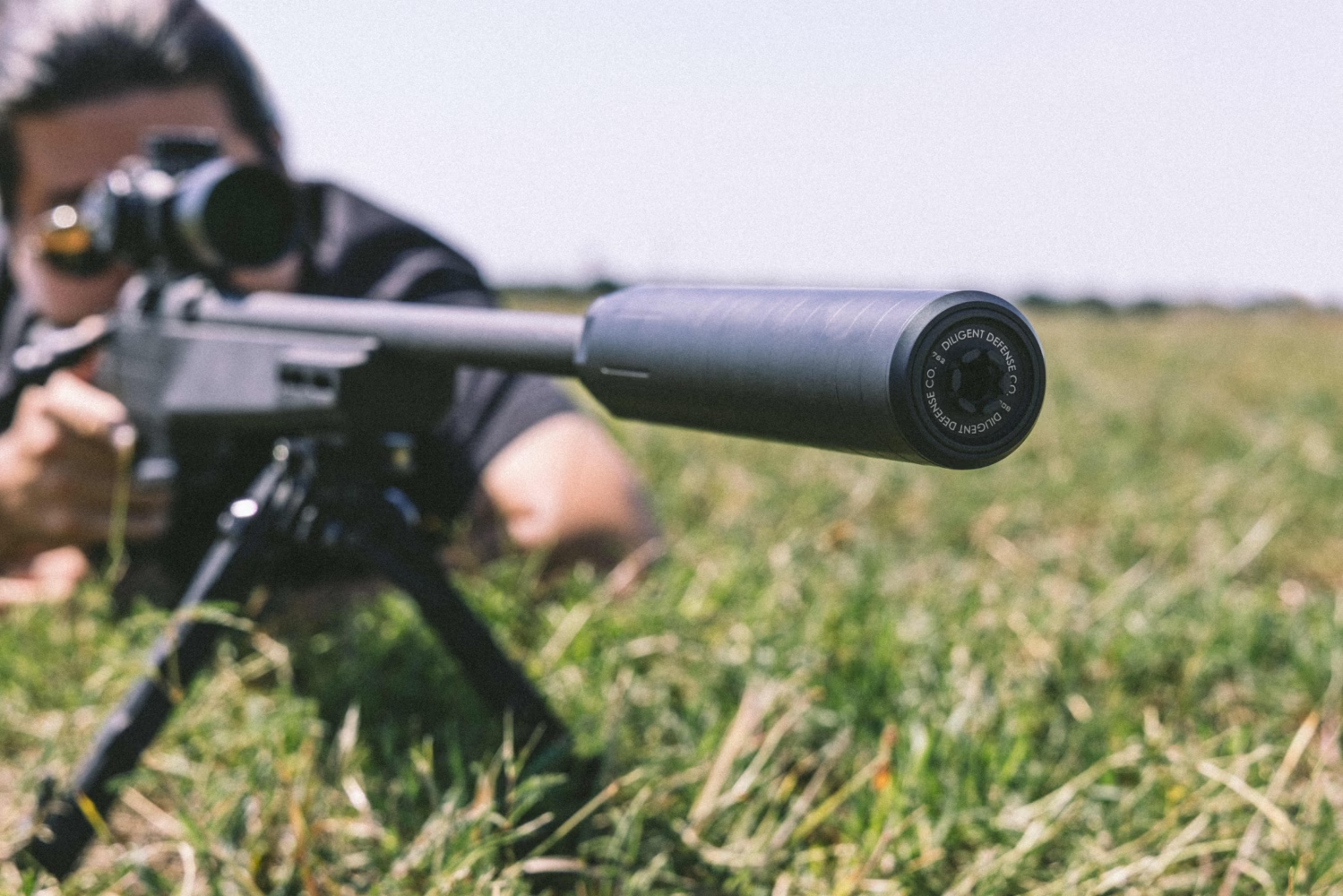
Conclusion
.300 Blackout is an ideal cartridge for suppression, but AR-15s can leave a bit to be desired when it comes to back pressure and gas system tuning. By opting for a low-back-pressure suppressor for your .300 Blackout AR, you can minimize the amount of tuning needed and ensure a smooth, gas-free experience at the range.
